Related Research Articles

The Palmer Raids were a series of raids conducted in November 1919 and January 1920 by the United States Department of Justice under the administration of President Woodrow Wilson to capture and arrest suspected socialists, especially anarchists and communists, and deport them from the United States. The raids particularly targeted Italian immigrants and Eastern European Jewish immigrants with alleged leftist ties, with particular focus on Italian anarchists and immigrant leftist labor activists. The raids and arrests occurred under the leadership of Attorney General A. Mitchell Palmer, with 6,000 people arrested across 36 cities. Though 556 foreign citizens were deported, including a number of prominent leftist leaders, Palmer's efforts were largely frustrated by officials at the U.S. Department of Labor, which had authority for deportations and objected to Palmer's methods.
Propaganda of the deed is specific political direct action meant to be exemplary to others and serve as a catalyst for revolution.
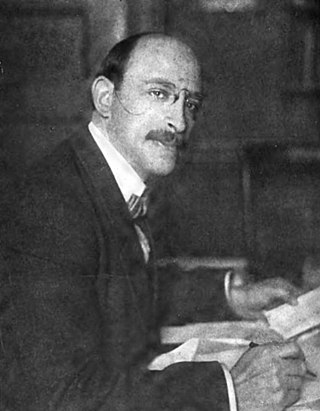
Alexander Berkman was a Russian-American anarchist and author. He was a leading member of the anarchist movement in the early 20th century, famous for both his political activism and his writing.

The Wall Street bombing was an act of terrorism on Wall Street at 12:01 pm on Thursday, September 16, 1920. The blast killed 30 people immediately, and another 10 later died of wounds that they sustained in the blast. There were 143 seriously injured, and the total number of injured was in the hundreds.
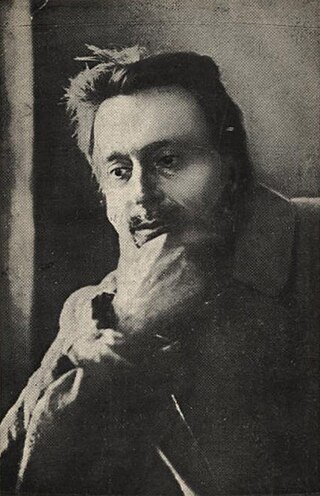
Lev Chernyi was a Russian individualist anarchist theorist, activist and poet, and a leading figure of the Third Russian Revolution. In 1917, Chernyi was released from his political imprisonment by the Imperial Russian regime, and swiftly became one of the leading figures in Russian anarchism. After strongly denouncing the new Bolshevik government in various anarchist publications and joining several underground resistance movements, Chernyi was arrested by the Cheka on a charge of counterfeiting and in 1921 was executed without trial.
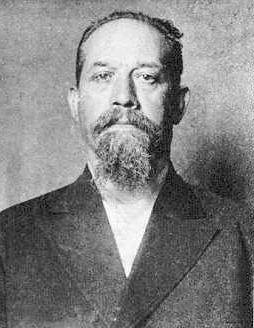
Luigi Galleani was an Italian insurrectionary anarchist best known for his advocacy of "propaganda of the deed", a strategy of political assassinations and violent attacks.

The Preparedness Day Bombing was a bombing in San Francisco, California, United States, on July 22, 1916, of a parade organised by local supporters of the Preparedness Movement which advocated American entry into World War I. During the parade a suitcase bomb was detonated, killing 10 and wounding 40 in the worst terrorist attack in San Francisco's history.

The Lexington Avenue explosion was the July 4, 1914, explosion of a terrorist bomb in an apartment at 1626 Lexington Avenue in New York City. Members of the Lettish section of the Anarchist Black Cross (ABC) were constructing a bomb in a seven-story tenement when the group's large supply of dynamite exploded prematurely. The blast destroyed most of the top three floors of the building, killing three conspirators and another renter who was not part of the bomb plot, as well as injuring dozens more.
Webster Thayer was a judge of the Superior Court of Massachusetts, best known as the trial judge in the Sacco and Vanzetti case.

A series of bombings were carried out or attempted by Galleanists from April through June 1919. The targets included anti-immigration politicians, anti-anarchist officials, and prominent businessmen, as well as a journalist and a church. Almost all of the bombs were sent by mail. The bombings were one of the major factors contributing to the First Red Scare. Two people were killed, including one of the bombers, and two injured.
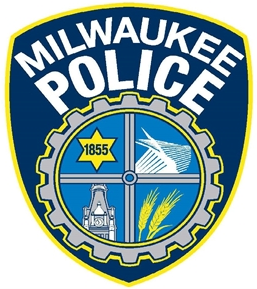
The Milwaukee Police Department is the police department organized under the city of Milwaukee, Wisconsin. The department has a contingent of about 1,800 sworn officers when at full strength and is divided into seven districts. Jeffrey B. Norman is the current chief of police, serving since December 2020.
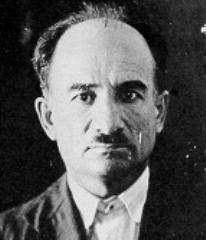
Mario Buda (1883–1963) was an Italian anarchist who was active among the militant American Galleanists in the late 1910’s and best known for being the likely perpetrator of the 1920 Wall Street bombing, which killed 40 people and injured hundreds. Historians implicate Buda in multiple bombings, though the documentary evidence is insufficient to prove his responsibility.

The Haymarket affair, also known as the Haymarket massacre, the Haymarket riot, the Haymarket Square riot, or the Haymarket Incident, was the aftermath of a bombing that took place at a labor demonstration on May 4, 1886, at Haymarket Square in Chicago, Illinois, United States. The rally began peacefully in support of workers striking for an eight-hour work day, the day after the events at the McCormick Harvesting Machine Company, during which one person was killed and many workers injured. An unknown person threw a dynamite bomb at the police as they acted to disperse the meeting, and the bomb blast and ensuing retaliatory gunfire by the police caused the deaths of seven police officers and at least four civilians; dozens of others were wounded.

Francesc Ferrer i Guàrdia, widely known as Francisco Ferrer, was a Spanish radical freethinker, anarchist, and educationist behind a network of secular, private, libertarian schools in and around Barcelona. His execution, following a revolt in Barcelona, propelled Ferrer into martyrdom and grew an international movement of radicals and libertarians, who established schools in his model and promoted his schooling approach.

The Milwaukee Police Department bombing was a November 24, 1917, bomb attack that killed nine members of local law enforcement and a civilian in Milwaukee, Wisconsin, United States of America. The perpetrators were never caught but are suspected to be an anarchist terrorist cell operating in the United States in the early 20th century. The target was initially an evangelical church in the Third Ward and only killed the police officers when the bomb was taken to the police station by a concerned civilian. The bombing remained the most fatal single event in national law enforcement history for over 80 years until the September 11 attacks.

The Morral affair was the attempted regicide of Spanish King Alfonso XIII and his bride, Queen Victoria Eugenie, on their wedding day, May 31, 1906, and its subsequent effects. The attacker, Mateu Morral, acting on a desire to spur revolution, threw a bomb concealed in a floral bouquet from a Madrid hotel window as the King's procession passed, killing 24 bystanders and soldiers and wounding over 100 others, while leaving the royals unscathed. Morral sought refuge from republican journalist José Nakens but fled in the night to Torrejón de Ardoz, whose villagers reported the interloper. Two days after the attack, militiamen accosted Morral, who killed one before killing himself. Morral was likely involved in a similar attack on the king a year earlier.
The Bresci Circle was a group of New York City anarchists who are remembered for a failed bombing attempt on St. Patrick's Cathedral in 1915, in which two of its members were arrested. The group was named after Gaetano Bresci, a New York anarchist who killed King Umberto I of Italy.
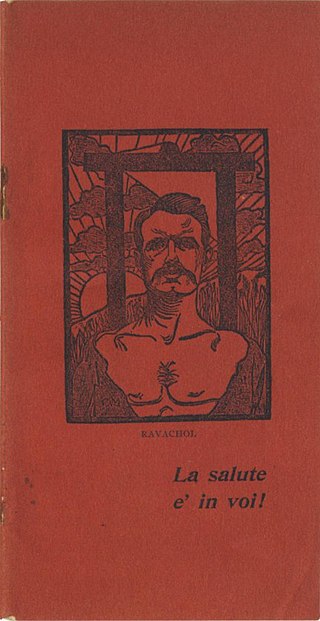
La Salute è in voi! was an early 1900s bomb-making handbook associated with the Galleanisti, followers of anarchist Luigi Galleani, particularly in the United States of America. The anonymous authors advised impoverished workers to overcome their despair and commit to individual, revolutionary acts. The Italian-language handbook offered plain directions to give non-technical amateurs the means to build explosives. Though this technical content was already available in encyclopedias, applied chemistry books, and industrial sources, La Salute è in voi wrapped this content within a political manifesto. Its contents included a glossary, basic chemistry training, and safety procedures. Its authors were likely Galleani and his friend Ettore Molinari, a chemist and anarchist.

Galleanisti are followers or supporters of the insurrectionary anarchist Luigi Galleani, who operated most notably in the United States following his immigration to the country. The vast majority of Galleanisti or Galleanists were similarly poor and working class Italian immigrants or Italian Americans, and especially Italian anarchists and Italian immigrants or Italian-Americans involved in the labor movement of the time. Galleanists remain the primary suspects in a campaign of bombings between 1914 and 1920 in the United States.
The Youngstown dynamite plot was a foiled attempt by Galleanist anarchists to move a case of dynamite by train from Steubenville, Ohio, to Chicago, from January 17–18, 1918. The 18-year-old Gabriella "Ella" Antolini Segata, part of the Italian Galleanist circle, was caught by a suspicious train porter. The dynamite was potentially en route to Milwaukee, where anarchists had been squaring off with police in a series of counter-retaliatory attacks stemming from the September 1917 Bay View incident. Antolini Segata was imprisoned for 18 months and the case was a big break for the Bureau of Investigation agent Rayme Weston Finch, who would come to lead investigations against the Galleanists.
References
- 1 2 Tanzilo, Robert (2005). "The Battle for Souls: A Protestant Evangelist in Italian Milwaukee". Italian Americana. 23 (2): 201–224. JSTOR 29777037.
- 1 2 3 4 Avrich 1996, p. 104.
- ↑ Avrich 1996, pp. 102–103.
- ↑ Avrich 1996, pp. 104–105.
- ↑ Avrich 1996, p. 105.
- ↑ Avrich 1996, pp. 105–106.
- ↑ Avrich 1996, p. 106.
- 1 2 The CJIS Link 2001, p. 6.